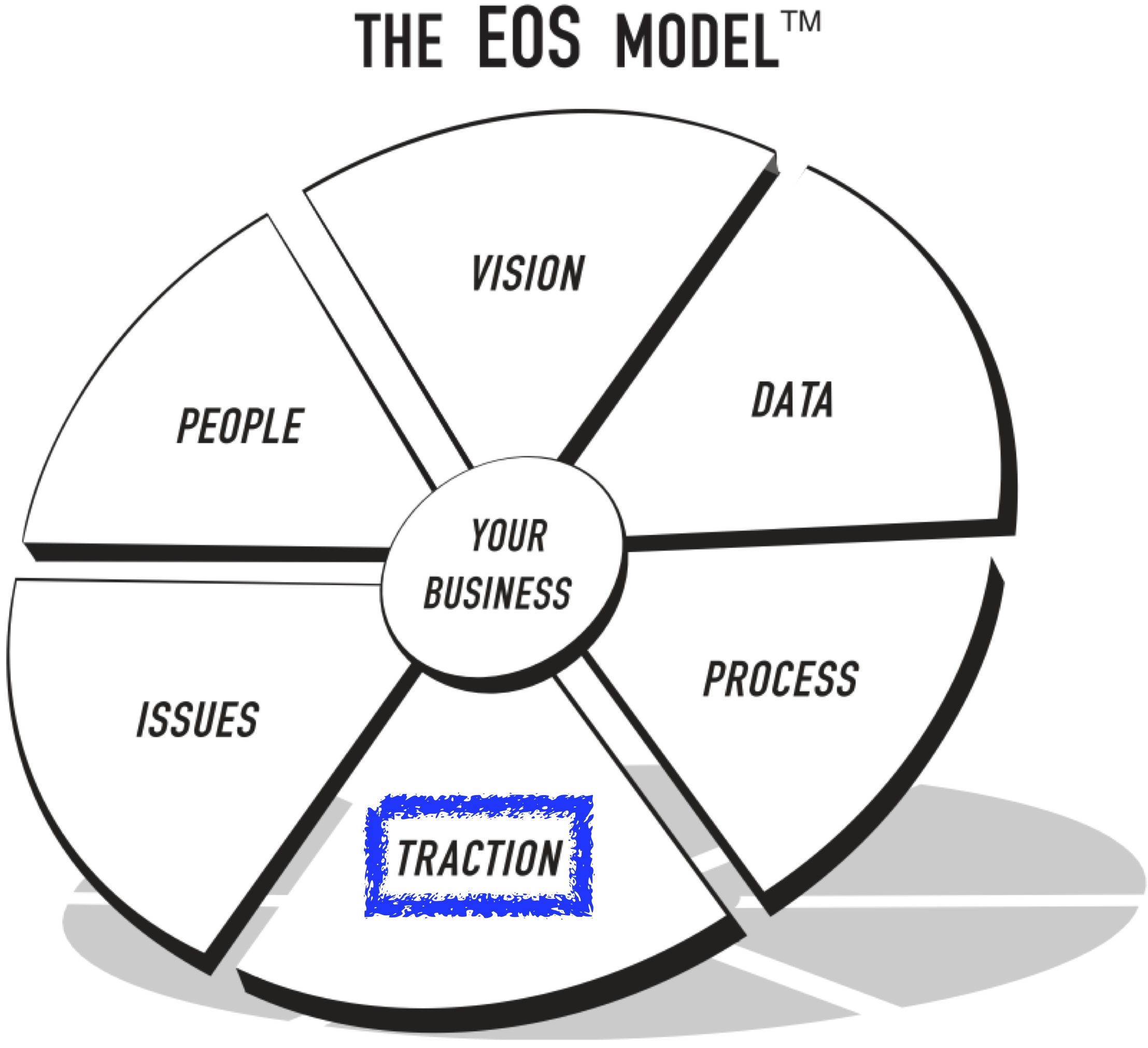The Traction Component + EOS
21 Feb 2022The back cover of Gino Wickman’s book Traction poses a powerful question:

The entrepreneur’s vision gives birth to a business. Traction makes the vision real. Earlier in this series, we covered five components that are necessary to get the business moving in the right direction: Vision, People, Data, Issues, and Process. This article summarizes the sixth component, Traction.
Traction enables the entrepreneur to gain a grip on the business. Traction is so important that Wickman’s entire book was named for this single component of EOS.
What is the Traction Component?
Traction can be defined as how well something moves ahead without slipping. Tires need traction to move through snow. Companies need traction to move from vision to reality.
This article is part of a series on Traction and the Entrepreneurial Operating System (EOS). EOS is a set of tools that enables a business leader to grow a company while maintaining sanity.
Accountability and Discipline
Organizational consultants have learned that accountability and discipline are the areas of greatest weakness in most companies. The EOS tools are systems that instill accountability and discipline into the fiber of the organization. For example, the Issues component describes a definite process for resolving problems in the organization: Identify, Discuss, and Solve. Systems like IDS become part of the culture of the organization, and that enables the team to achieve.
90-Day Pulse
Many of the tools within EOS are based on observations about human behavior. For example, most humans and teams can stay focused on a project for about ninety days. After ninety days, our focus drifts and we tend to go off on tangents. That is why it’s necessary for us to re-group and re-focus on the big picture goals every ninety days. The EOS tools support this 90-day pulse.
Rocks, Gravel, Sand, and Water
The term Rock is borrowed from a business fable from Steven Covey’s Seven Habits of Highly Effective People. Imagine a glass container next to a pile of rocks, a bucket of sand, and a glass of water. If you want to get the rocks, sand, and water into the glass container, it’s better to start with the rocks first. The gravel fills in the spaces between the rocks, sand fills in the spaces between the gravel, and the water completes the process.
Rocks represent the priorities that the organization must accomplish in the next ninety days. The leadership team chooses three to seven Rocks per quarter. Each Rock has a single person who is accountable for the Rock’s success. The accountable person is known as the Rock’s owner.
The Traction Component includes a method for extracting Rocks from the Vision/Traction Organizer (V/TO) described earlier in this series.
Meeting Pulse
Meetings are designed to happen at regular, predictable times. Hence the term Meeting Pulse. The EOS framework has provisions for meetings that occur annually, quarterly, and weekly.
Example: Here are some rules for weekly meetings…
- Be on the same day & time each week.
- Start on time.
- Have a pre-printed agenda.
- End on time.
The time constraint keeps meetings from going on & on beyond the point of productivity.
Level 10 Meetings
If a meeting can be rated on a scale from 1 to 10, the goal of a Level 10 meeting is to be rated at 10. After decades studying meetings in a variety of industries, EOS consultants have created a template for successful meetings that they call Level 10.
Each Level 10 meeting starts with a Segue into the meeting. The purpose of the segue is the shift all minds from working in the business to working on the business. During the segue, participants will share good news about recent company achievements, perhaps something that an individual has done well. The Traction chapter shares an agenda with approximate durations for each section of the meeting.
Conclusion
Every component of Traction strengthens the others. Result: A more productive organization.
EOS Recap
If you are considering EOS for your business, you might enjoy the other articles in the series:




